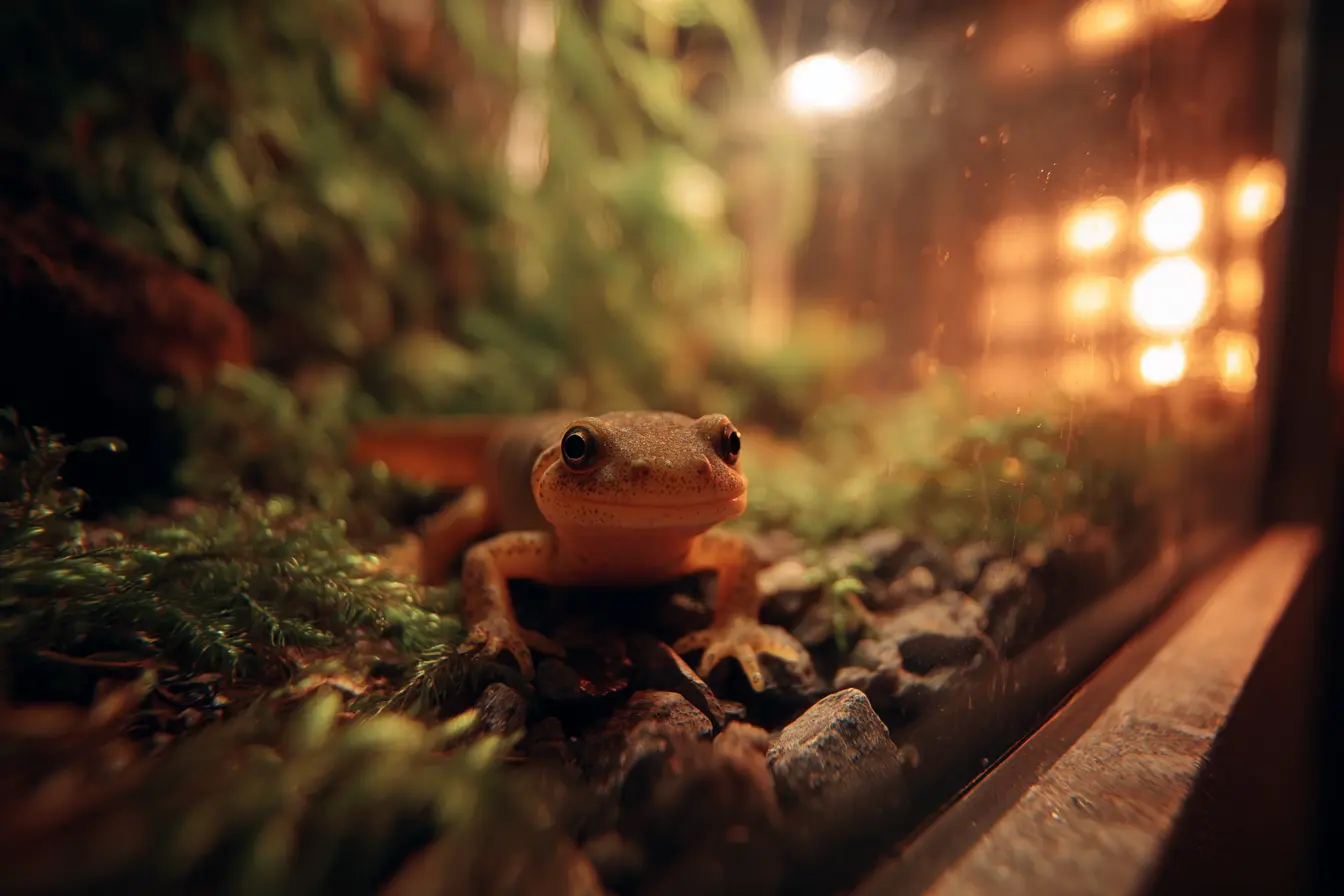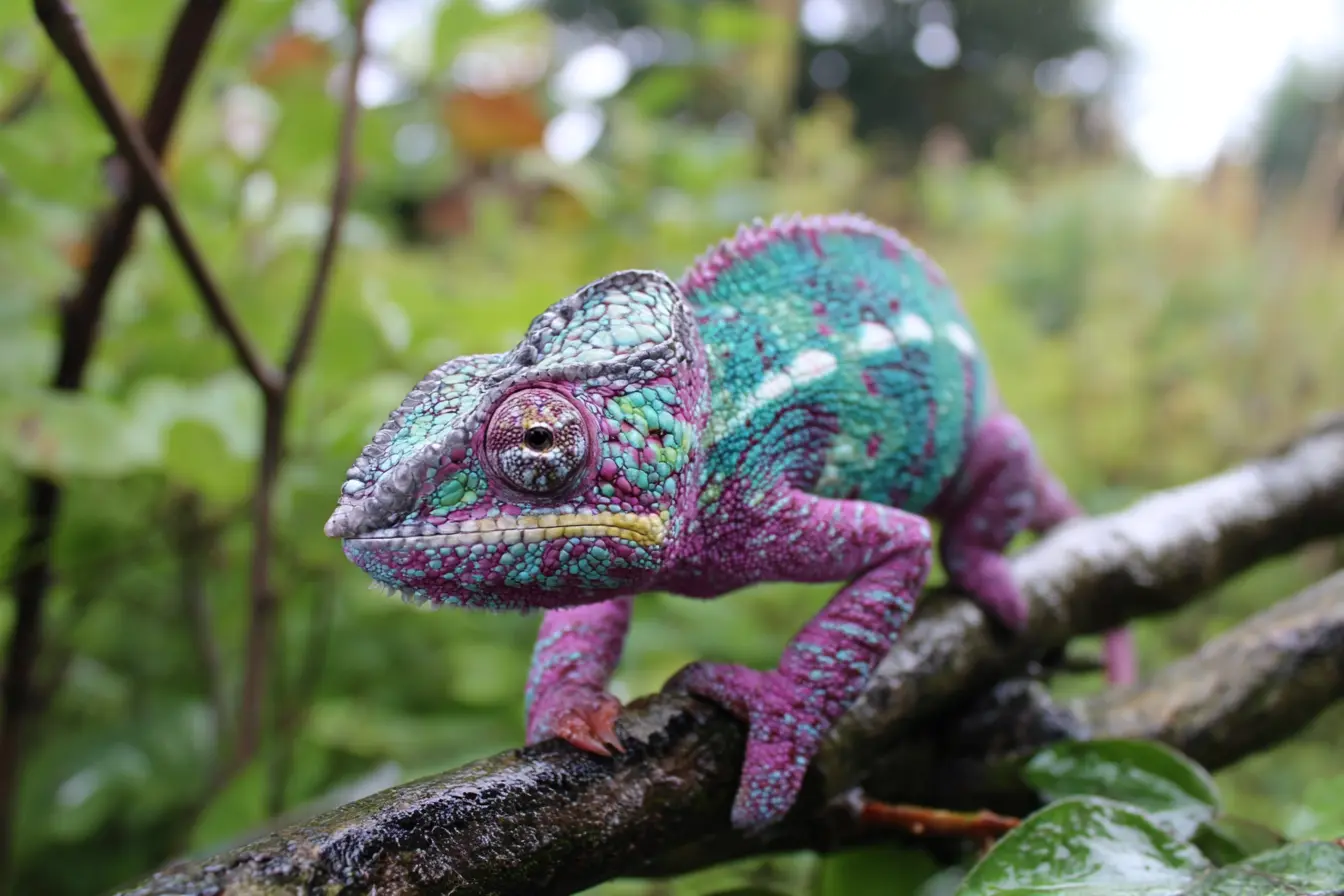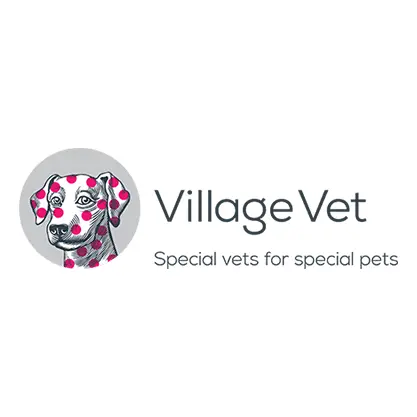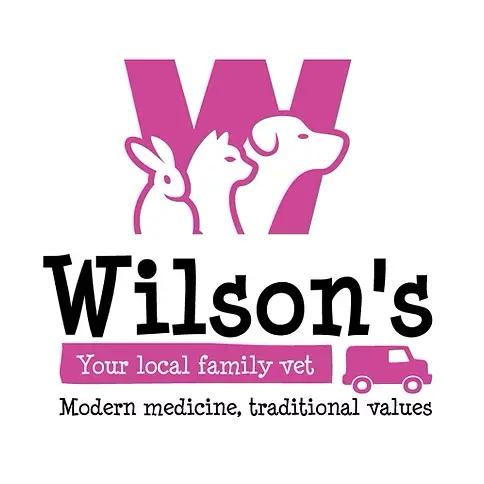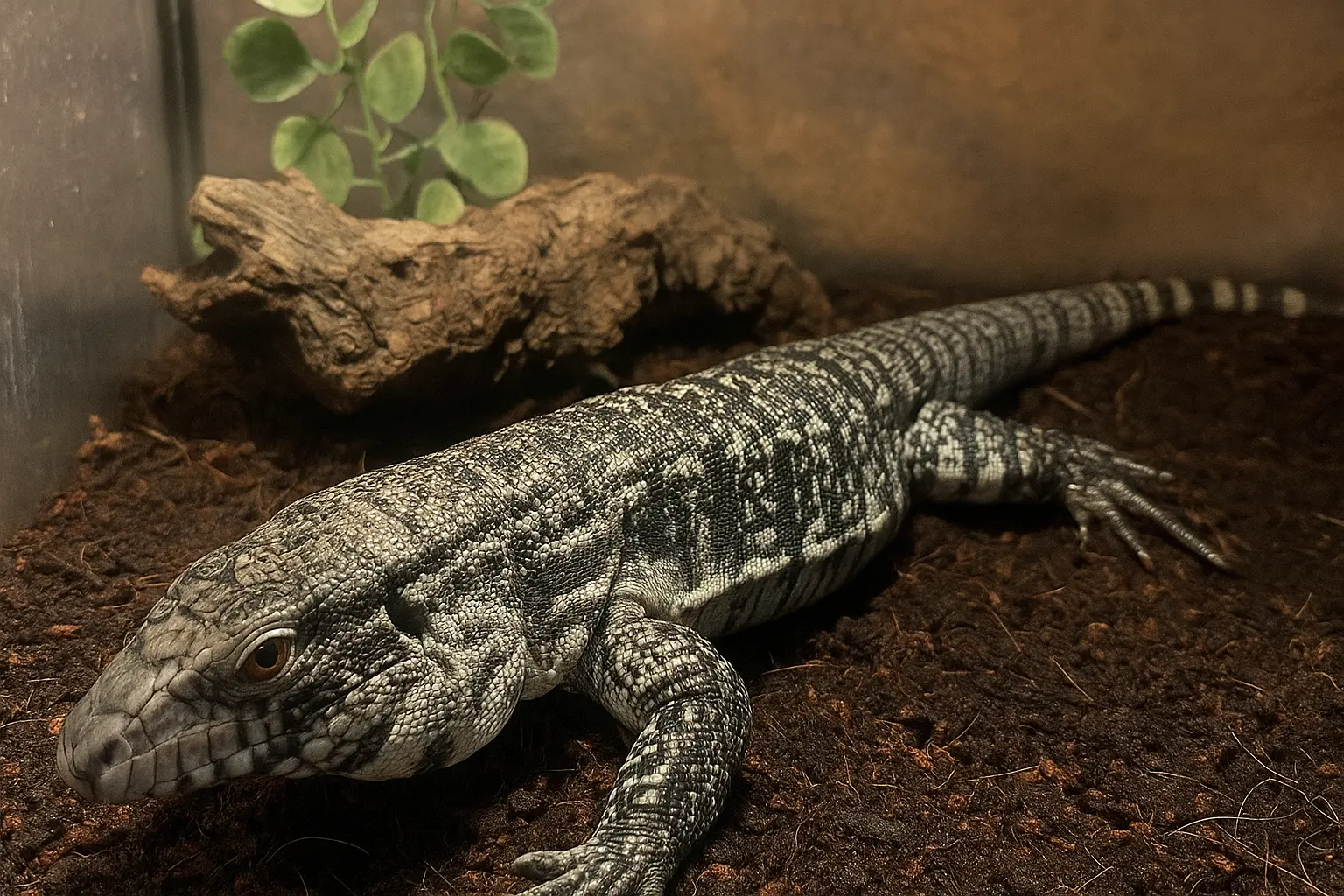
Blue Tegu Care Guide: Everything New Owners Need to Know
Blue tegus (Salvator merianae), a colour variation of the Argentine black and white tegu, are becoming increasingly popular among reptile enthusiasts due to their striking appearance and relatively docile nature. Known for their silvery-blue scales, especially prominent in males, blue tegus are large, intelligent, and interactive lizards that can form strong bonds with their owners. However, they require significant space, time, and commitment.
If you’re considering getting a blue tegu, this comprehensive care guide will help you understand everything you need to know about their care, diet, housing, and handling.
What is a Blue Tegu?
Blue tegus are a morph of the Argentine black and white tegu (Salvator merianae), known for their bluish hue and a calmer temperament compared to other large lizards. They can grow up to 120–140 cm in length, with males being larger and more robust than females.
In captivity, blue tegus can live for 15–20 years with proper care. They are terrestrial and highly intelligent, capable of recognising their owners and responding to positive interactions. Unlike some other tegu species, blue tegus are more likely to develop a trusting relationship with regular handling and care.
Sourcing and Selecting a Blue Tegu
Choosing a healthy tegu from a reliable source is essential for long-term success.
Where to Buy
- Reputable breeders: Captive-bred tegus are the best option as they are generally healthier and more accustomed to human interaction.
- Specialist reptile shops: Some UK reptile shops stock blue tegus, but always check their origin and health history.
- Rescue centres: Consider adopting a tegu in need of a home.
To help combat the illegal wildlife trade, avoid purchasing wild-caught tegus. These animals are often more aggressive, stressed, and likely to carry parasites, which can complicate their care.
What to Look For
When selecting a blue tegu, check for these signs of good health:
- Bright, clear eyes with no discharge
- Smooth, clean skin with no retained shed
- A full, well-muscled body
- Active and alert behaviour
- No wheezing, nasal discharge, or signs of respiratory distress
Housing and Enclosure Setup
Blue tegus are highly active and require a large, secure enclosure with plenty of floor space. Their size and strength mean that standard vivariums won’t be sufficient for adults - you’ll need a custom-built or large commercial enclosure.
Enclosure Size
For an adult blue tegu, the minimum recommended enclosure size is 240 cm (L) x 120 cm (W) x 90 cm (H). The enclosure should provide plenty of space for movement, basking, and burrowing.
Substrate
Tegus love to dig and burrow, so a deep substrate is essential. Suitable options include:
- Coconut coir and play sand mix
- Cypress mulch
- Topsoil (pesticide-free)
Provide at least 30 cm of substrate depth to allow for burrowing. Keep the substrate slightly moist to maintain proper humidity.
Heating and Lighting
Blue tegus require a temperature gradient in their enclosure to regulate their body temperature.
- Basking spot temperature: 40–45°C
- Ambient temperature: 25–30°C
- Night-time temperature: 20–24°C
Use a combination of basking bulbs and ceramic heat emitters. UVB lighting is essential for tegus to synthesise vitamin D3 and prevent metabolic bone disease. Use a 10–12% UVB bulb, and replace it every six months.
Humidity
Maintain humidity levels between 60–80%. Misting the enclosure regularly and providing a large water dish will help keep the humidity in the optimal range. Use a hygrometer to monitor humidity levels.
Diet and Nutrition
Blue tegus are omnivores and require a varied diet of animal protein, fruits, and vegetables to stay healthy. Providing a balanced and diverse diet is key to preventing nutritional deficiencies.
Staple Foods
- Cooked chicken, turkey, and fish
- Insects (crickets, dubia roaches, locusts)
- Eggs (scrambled or hard-boiled)
- Fruits such as blueberries, mango, papaya, and strawberries
- Vegetables such as collard greens, dandelion greens, butternut squash, and carrots
Occasional Treats
- Pinkie mice or small rodents (in moderation due to high fat content)
- Snails
Supplementation
Dust food with calcium powder with vitamin D3 three times a week and a multivitamin supplement once a week to prevent nutritional deficiencies. Always provide fresh water in a large dish and change it daily.
Handling and Behaviour
Blue tegus are known for their intelligence and can become quite tame with regular handling. They are one of the few large lizards that can form a bond with their keeper. However, they are strong and can be defensive if they feel threatened.
Tips for Handling
- Start handling your tegu at a young age, using short and gentle sessions.
- Allow them to explore your hands rather than grabbing them.
- Support their entire body, especially their legs and tail.
- Move slowly and avoid sudden movements to prevent stress.
With patience and consistency, most blue tegus will learn to tolerate and even enjoy human interaction.
Common Health Issues
Blue tegus are generally hardy reptiles, but they can develop health problems if their care requirements aren’t met.
Metabolic Bone Disease (MBD)
Caused by calcium deficiency and inadequate UVB exposure. Symptoms include lethargy, soft bones, and difficulty moving.
Respiratory Infections
Often caused by incorrect humidity or temperature levels. Symptoms include wheezing, nasal discharge, and open-mouth breathing.
Obesity
Tegus can easily become obese if overfed or given too many fatty foods. Monitor their weight and diet closely.
Parasites
Internal parasites are more common in wild-caught tegus. Symptoms include diarrhoea, lethargy, and weight loss. A faecal test by a reptile vet can detect parasites.
If you notice any signs of illness, consult an experienced reptile vet immediately.
Specialist Vet Care
Blue tegus don’t require vaccinations, but regular health checks are essential.
Routine Health Checks
An annual visit to a reptile vet is recommended. This should include a physical examination and a faecal test for parasites.
Emergency Situations
Seek immediate veterinary care if your tegu shows signs of:
- Significant weight loss
- Persistent lethargy or refusal to eat
- Difficulty breathing or wheezing
- Visible injuries or swollen limbs
Care and Maintenance
Maintaining a clean and well-regulated environment is crucial for your blue tegu’s health.
Daily Tasks
- Check temperatures and humidity levels
- Remove uneaten food and spot-clean waste
- Ensure fresh water is available
Weekly Tasks
- Clean and disinfect water dishes and hides
- Inspect heating and lighting equipment
Monthly Tasks
- Deep-clean the enclosure and replace substrate if needed
- Replace UVB bulbs every six months
Final Thoughts
Blue tegus are intelligent, powerful, and rewarding reptiles for keepers who are prepared to meet their specific needs. They require a large enclosure, a varied diet, and regular interaction to thrive in captivity. For those willing to commit the time and effort, blue tegus can develop into affectionate and interactive companions.
By following this guide, you’ll be well-prepared to provide your blue tegu with the care it needs to live a long and healthy life.
Related Vets
Vets near you
Speciality vets
- Aquatics vet specialists
- Birds vet specialists
- Camelids vet specialists
- Cats vet specialists
- Cattle vet specialists
- Deer vet specialists
- Dogs vet specialists
- Equines vet specialists
- Exotic vet specialists
- Goats vet specialists
- Pigs vet specialists
- Poultry vet specialists
- Sheep vet specialists
- Small Mammals vet specialists
- Wild vet specialists
